A Famous & Enlightening History of Prestonfield
3rd January 2023
Prestonfield’s grounds, now home to highland cows and peacocks, were once known as the “Priestfield Estate”. In medieval times it was the setting for a wealthy Cistercian monastery, founded in 1150 by Henry, Earl of Huntingdon.
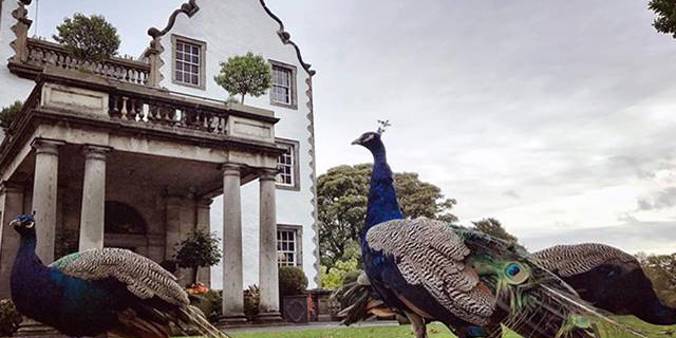
Prestonfield’s grounds, now home to highland cows and peacocks, were once known as the “Priestfield Estate”. In medieval times it was the setting for a wealthy Cistercian monastery, founded in 1150 by Henry, Earl of Huntingdon.
In 1376, after the brutal Wars of Scottish Independence the monastery’s lands were seized and handed to the Earl of Carrick—son of King Robert II. He then sold the Priestfield Estate to the powerful Wardlaw family.
From the Wardlaw family it passed to Walter Chepman, King James IV’s printer and the very first in Scotland. However, by the latter half of the 17th Century the estate had fallen into financial hardship. This eventually ended in the sale of the estate to Sir James Dick in 1677.
Who Was Sir James Dick?
Sir James Dick was the grandson of Sir William Dick of Braid—an eminent figure in Scottish politics, who held the office of Lord Provost of Edinburgh for a short time. Essentially acting as a figurehead for the city. From his prosperous mercantile and banking businesses, Sir William was the richest man in Scotland. So wealthy, he was often called upon to bail out the Scottish exchequer.
Despite this, his freeness with money and life choices landed him in prison in 1655. He died whilst incarcerated, leaving his family without even the funds for his funeral.
In the two decades following his death, his grandson Sir James Dick picked up the reigns, and repaired their fortunes. He too became Lord Provost of Edinburgh.
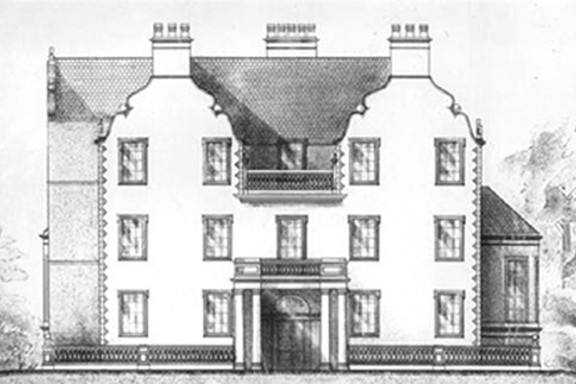
The Beginning of Prestonfield House
Sir James Dick was the grandson of Sir William Dick of Braid—an eminent figure in Scottish politics, who held the office of Lord Provost of Edinburgh for a short time. Essentially acting as a figurehead for the city. From his prosperous mercantile and banking businesses, Sir William was the richest man in Scotland. So wealthy, he was often called upon to bail out the Scottish exchequer.
Despite this, his freeness with money and life choices landed him in prison in 1655. He died whilst incarcerated, leaving his family without even the funds for his funeral.
In the two decades following his death, his grandson Sir James Dick picked up the reigns, and repaired their fortunes. He too became Lord Provost of Edinburgh. uring an anti-Catholic riot in 1681 the original Priestfield House was burned down. Owner Sir James escaped unharmed, and was able to commission the building of a new property—to rise from the ashes.
He employed the services of renowned Scottish architect Sir William Bruce. Sir William was the founder of the classical architectural movement in Scotland, and one of the key proponents of the Palladian style. His vision and skill as an architect were so respected, that he was appointed to rebuild the Palace of Holyroodhouse under Charles II.
Sir James named his new house “Prestonfield” to remove its prickly name.
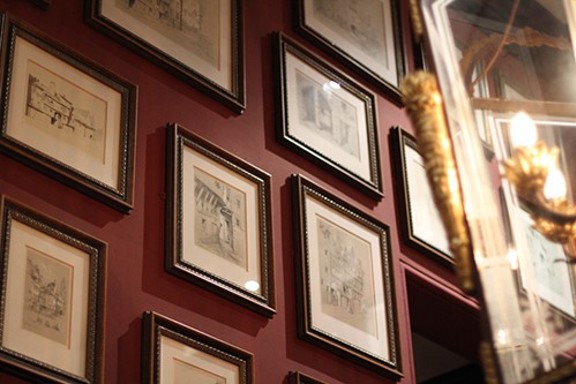
Prestonfield: A New Aesthetic
No expenses were spared on Prestonfield House, and it became the luxurious manor it is renowned for being. It was enveloped by a carefully designed Dutch garden, with trim laws and parterres, and beautiful fountains.
On the inside it was embroidered with exquisite plasterwork, by the same artists that worked on the Palace of Holyroodhouse. Sir James also adorned his new house with leather wall coverings, tapestries, fine art, and fine furniture. His chinoiserie lacquer cabinets, in all their glory, are still a feature today.
The Jacobite Collection
After Sir James Dick’s death, the Prestonfield Estate passed to his grandson William, and his mother, Sir James’ daughter Lady Cunyngnham, made Prestonfield House her home.
In 1745 Bonnie Prince Charlie’s Jacobite army settled nearby Prestonfield. It’s thought that Sir William’s younger brother Alexander Cunyngnham was friends with Bonnie Prince Charlie, whose real name was Charles Edward Stuart. It’s supposed the pair met during Alexander’s travels in Italy.
This, coupled with their Catholic lineage, placed the Dick-Cunyngnham family as supporters of the Jacobite cause—and a noteworthy donation was made to the war fund.
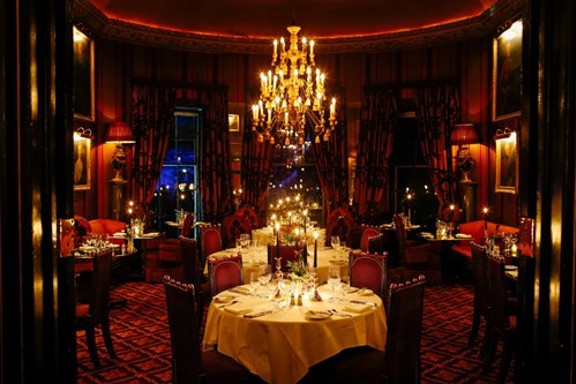
Rhubarb Reaches Scotland
Upon assuming ownership of the estate and baronetcy from his brother, Alexander Cunyngnham changed his surname to Dick, becoming Sir Alexander Dick. He was an esteemed physician—seven times President of the Royal College of Physicians and one of the founders of the Royal Society of Edinburgh.
Although, he is equally remembered for being the keen horticulturalist that introduced rhubarb to Scotland. For that, we are ever thankful. (Hence, Rhubarb restaurant).
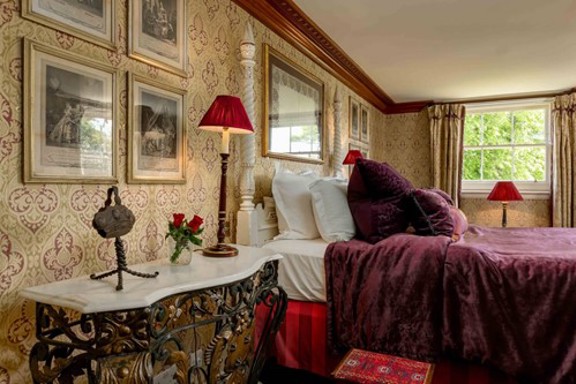
Hideout of The Good & The Great
Sir Alexander kept company with some of the most astute thinkers and creatives of his time—and opened the doors of Prestonfield to a plethora of admirable guests. These included Benjamin Franklin, David Hume, Dr Samuel Johnson, and artist Allan Ramsey. It was Sir Alexander’s trip to Italy with Allan Ramsay that inspired him to commission the painting of Italian style landscapes to dine beneath at Prestonfield.
Here started Prestonfield’s impressive reputation for hospitality, and as a stylish hideout for creative and scientific luminaries.
Upon opening as a hotel in the 1960s Prestonfield has continued attracting famous guests, including film stars and politicians. Sandie Shaw walked barefoot across the marble. Catherine Zeta Jones, Elton John, and Sean Connery partied until dawn broke. Oliver Reed raised hell, which was to be expected.
Even Sir Winston Churchill and Margaret Thatcher have dined respectively at Prestonfield. It has truly proven itself as a place for the good and the great.
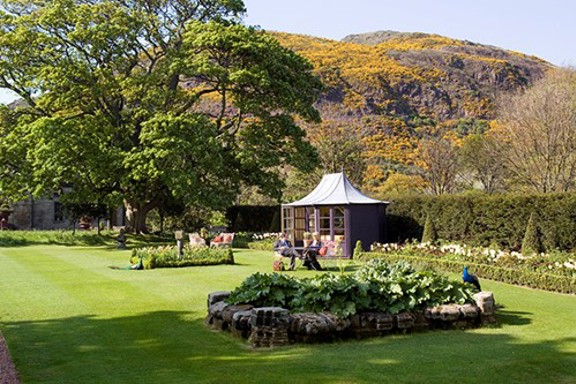
James Thomson's Prestonfield
Since 2003, under James Thomson’s visionary patronage, Prestonfield House has been dusted off and sympathetically restored. Where once there were fading memories of past grandness and the ghosts of lavish parties—now there is modern exuberance and society once again. Nowhere else in Edinburgh compares to Prestonfield, with its baroque splendour and luxury defining service.
It is not so much a place to visit, but one to discover, amongst the romance of its grounds and down a private track deceptively close to Edinburgh’s centre. Be it the fabulous Rhubarb restaurant or our decadent rooms, Prestonfield House is a hidden gem in the city.
For a more comprehensive story of Prestonfield, please view the history page.






